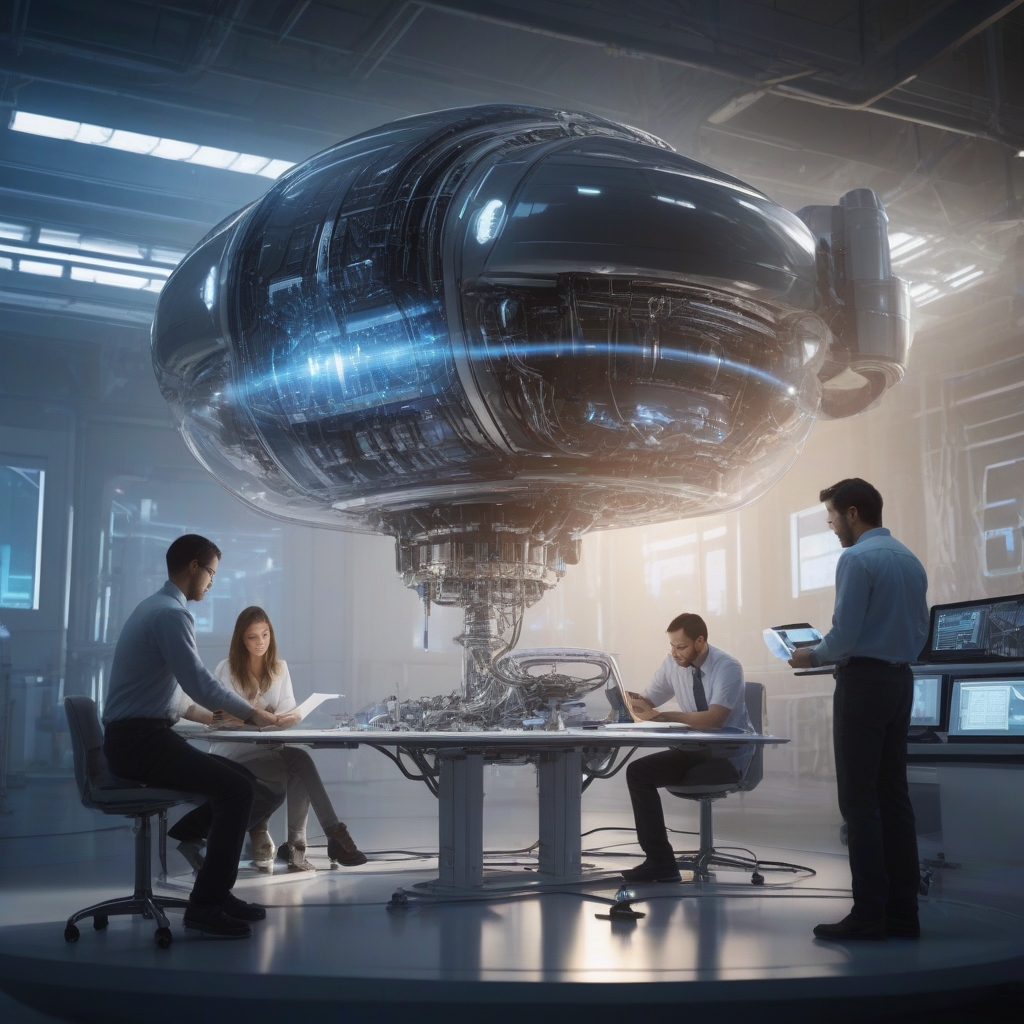In the ever-evolving realm of aerospace engineering, artificial intelligence (AI) is proving to be a transformative force. The fusion of AI with traditional engineering heralds a new era in spacecraft development. As we venture further into the cosmos, designing more efficient and powerful spaceship engines becomes crucial. This blog delves into how AI is revolutionizing the field and paving the way for unprecedented advancements in engine design.
The Rise of AI in Aerospace Engineering
The aerospace industry, traditionally dominated by human expertise and intuition, is experiencing a seismic shift with the integration of AI. **AI’s ability to process vast quantities of data**, recognize patterns, and automate routine tasks makes it an invaluable tool in engineering. Some of the key advantages AI brings to aerospace engineering include:
- **Enhanced Design Capabilities**: AI can simulate numerous designs rapidly, providing engineers with insights previously unattainable through traditional methods.
- **Predictive Analysis**: By analyzing historical and real-time data, AI can predict potential failures or inefficiencies in engine design.
- **Optimization and Testing**: AI algorithms can optimize engine components to maximize performance and minimize resource consumption.
Collaborative Innovation: AI and Human Engineers
One of the most exciting aspects of AI’s role in designing spaceship engines is its collaboration with human engineers. This partnership surpasses mere automation, showcasing a synergistic relationship where **AI augments human creativity**. In cutting-edge laboratories, diverse teams of engineers work alongside AI systems, leveraging each other’s strengths in a collaborative environment.
AI as a Co-designer
AI’s role in engine design extends beyond mere support to active participation in the creative process. **AI systems can generate complex design solutions** that human engineers might overlook. These systems explore a multitude of possibilities, presenting novel configurations and innovations in engine components. Engineers, in turn, refine and tailor these designs, ensuring they meet stringent performance requirements and align with mission objectives.
The Laboratory of the Future
Imagine a futuristic laboratory where holographic displays project intricate engine designs, and digital blueprints hover in mid-air. Engineers and AI systems stand side by side, analyzing data through augmented reality tools, translating conceptual designs into tangible prototypes.
The incorporation of advanced technology in such laboratories includes:
- **Holographic Displays**: Allow for dynamic visualization of engine designs, enabling engineers to interact with and modify complex models in real-time.
- **Augmented Reality (AR) Tools**: Facilitate immersive collaboration, where engineers can seamlessly integrate digital simulations with physical prototypes.
- **Touchscreen Interfaces**: Provide intuitive control over design parameters and simulation scenarios, fostering effective communication between human and AI collaborators.
The Benefits of AI-Driven Engine Design
AI-driven design presents several compelling benefits for the aerospace industry, particularly in the context of spaceship engine development.
Innovative Materials and Techniques
By analyzing material properties and performance data, AI systems can recommend advanced materials and manufacturing techniques that enhance engine efficiency and durability. This capability extends to exploring groundbreaking concepts such as **additive manufacturing** (3D printing) of engine components, which can reduce weight and increase performance.
Efficiency and Performance Optimization
AI excels at identifying areas for optimization, whether in fuel consumption, thrust-to-weight ratios, or thermal management systems. Through iterative simulations and analysis, AI helps refine designs to achieve the delicate balance between power and efficiency, critical for deep space missions.
Accelerated Development Cycles
The integration of AI significantly shortens development timelines. Automated simulations and AI-generated designs mean that what once took months or years can now be achieved in weeks. This acceleration allows aerospace companies to rapidly iterate and refine designs, keeping pace with the demands of modern space exploration.
Challenges and Ethical Considerations
Despite its remarkable potential, the integration of AI in aerospace engineering is not without challenges. **Data security, algorithmic biases, and ethical considerations** must be addressed to ensure responsible AI deployment.
Data Security and Privacy
The reliance on vast datasets to train AI systems necessitates robust security measures to protect sensitive information and intellectual property. Ensuring data privacy is imperative to maintain trust and integrity within the industry.
Bias in AI Algorithms
AI systems are only as unbiased as the data they are trained on. Engineers and developers must remain vigilant against any biases that could inadvertently affect design decisions or disproportionately impact certain groups.
Ensuring Human Oversight
While AI holds immense potential, maintaining human oversight and intervention is critical. Engineers must remain involved throughout the process to provide guidance, make ethical decisions, and ensure AI recommendations align with overarching mission goals.
Looking to the Future: AI’s Role in Space Exploration
As humanity sets its sights on exploring distant planets and stepping beyond our solar system, AI will play an increasingly vital role in these endeavors. In the realm of spaceship engine design, AI is not merely a tool but a partner in shaping the future of space travel.
**The convergence of AI with aerospace engineering** heralds an era of innovation and possibility. By embracing this technological evolution, the industry can push the boundaries of what is feasible, unlocking new frontiers in human exploration. The journey has just begun, and the stars are within reach.

Leave a Reply